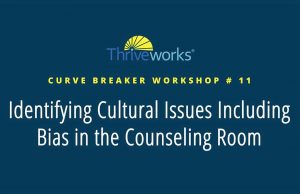
- When exploring different options for therapy and therapists, it’s important that you acknowledge the importance of a healthy therapeutic relationship and therefore avoid several types of therapists.
- The first kind of counselor you should avoid is the Conflict of Interest Therapist: or in other words, a counselor that your close friend, coworker, or family member goes to for counseling.
- Another red flag is if the therapist is nowhere to be found online; it’s a good idea to circumvent receiving treatment from therapists who don’t have their own websites.
- Also dodge Jump-Right-In-Therapists, or those who speed the process along instead of holding an initial assessment where you’ll both decided whether or not you’re a good fit for each other.
- Additionally, avoid working with therapists you don’t feel comfortable talking to as well as those who make you feel outright uncomfortable: if you don’t trust them therapy will most likely not work out.
In exploring options for counseling or therapy, you might be wondering what a healthy therapeutic relationship looks like. Well, identifying the very opposite—what a healthy therapeutic relationship does NOT look like—can help you better understand if this or that counselor is right for you. Laura F. Dabney, MD, gives a few examples of therapists you should avoid working with:
The Conflict of Interest Therapist
It may seem best to find an EHP via referral from a trusted friend or co-worker. After all, you’re looking for a tried-and-true option, right? It’s actually a RED FLAG and possible conflict of interest for an EHP to treat spouses, friends or coworkers simultaneously. The situation could leave you wondering if your provider and friend are talking about you, or if their relationship is affecting the way your provider sees or treats you. And what if you need to talk to your EHP about this particular friend or co-worker? None of these situations promote optimal trust levels and may lead to awkwardness between you and your friend later (e.g. will you feel obligated to ask how therapy is going or give updates? Hint: you’re not). It may be upsetting if an EHP won’t see you due to a conflict of interest, but it’s actually a sign of a good therapist.
The Offline Therapist
I highly recommend using the web to find an EHP. In fact, it’s a RED FLAG if the EHP doesn’t have a website. Being in touch with the outside world and knowing how to connect with people are signs of a healthy EHP and practice, and being online is part of that. If the provider has a site, look for organized and up-to-date information, at least one picture of her, a biography and a few statements about her style and philosophy. These are all indications that the EHP wants and knows how to connect with you.
Expert Tip: Your general practitioner is another good source for finding an EHP since they often know their referrals personally and professionally. Plus, the EHP can ask your general practitioner to look for medical causes related to your problems.
The Jump-Right-In Therapist
After you find an EHP worth meeting, it’s important to have an initial assessment visit where you both decide whether you’re a match. Any EHP not willing to or uncomfortable with an assessment appointment is a RED FLAG. Common issues that arise during this assessment include:
- Poor eye contact
- Taking excessive notes or typing on a computer
- Too much talking/explaining and not enough listening — they should properly balance the two
- Dominating the session with pre-set questions and never letting you guide part of the discussion
- Criticizing you or your choices (i.e.. saying, “You shouldn’t have done that,” as opposed to saying, “I’m wondering why you did that”)
- Taking it personally if the patient asks a question or states they are uncomfortable
- Inappropriate touching — a brief handshake is as far as it should go
If you’re still unsure about the EHP post-assessment, simply say you’d like time to digest what you learned and will be in touch if you wish to go forward. It’s a good sign if the EHP is comfortable with this.
If something very inappropriate happens (such as unwanted touching, inappropriate language or physical acting out), immediately create a definitive boundary by extending your arm and stating, “STOP. This is making me uncomfortable and I don’t think it’s appropriate.” Walk out immediately. You should also report the incident to the EHP’s professional board.
The Dirty, Loud, Laundry-Airing Therapist
The EHP’s space is almost as important as the EHP herself. Look for well-appointed, comfortable and soundproofed offices that encourage you to open up. The more you open up, the faster and more effective the therapy. Not feeling comfortable in the office space, lobby or building is a RED FLAG.
The Doesn’t-Pass-Your-Gut-Check Therapist
If you get a bad gut feeling from the EHP at any point in the therapy or coaching process, even if you can’t put your finger on why, it’s best to move on. An EHP-client relationship hinges on open and honest communication. If you do not fully trust your EHP, the therapy will not likely work..
Let’s keep in touch! Sign up to receive our newsletter:
Start a Relationship with An Exceptional Counselor
- Skilled and caring professional counselors
- Accepting all major and most insurances
- High-touch customer service & premium benefits
- Same- or next-day appointments
- Ultra-flexible 23.5hr cancellations













